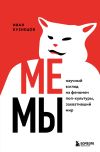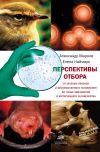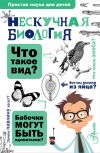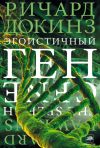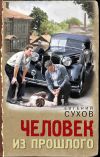Текст книги "Расширенный фенотип: длинная рука гена"

Автор книги: Ричард Докинз
Жанр: Зарубежная образовательная литература, Наука и Образование
Возрастные ограничения: +12
сообщить о неприемлемом содержимом
Текущая страница: 31 (всего у книги 34 страниц)
mutations. Proceedings of the Royal Society of Edinburgh 50, 204–219.
Fisher, R. A. & Ford, E. B. (1950). The Sewall Wright effect. Heredity 4,
47–49.
Ford, E. B. (1975). Ecological Genetics. London: Chapman and Hall.
Fraenkel, G. S. & Gunn, D. L. (1940). The Orientation of
Animals. Oxford: Oxford University Press. {274}
Frisch, K. von (1967). A Biologist Remembers. Oxford: Pergamoe Press.
Frisch, K. von (1975). Animal Architecture. London: Butterworths.
Futuyma, D. J., Lewontin, R. C, Mayer, G. C, Seger, J. &
Stubblefield, J. W. (1981). Macroevolution conference. Science 211, 770.
Ghiselin, M. T. (1974a). The Economy of Nature and the Evolution of
Sex. Berkeley: University of California Press.
Ghiselin, M. T. (1974b). A radical solution to the species problem. Systematic
Zoology 23, 535–544.
Ghiselin, M. T. (1981). Categories, life and thinking. Behavioral and Brain
Sciences 4, 269–313.
Gilliard, E. T. (1963). The evolution of bowerbirds. Scientific
American 209 (2), 38–46.
Gilpin, M. E. (1975). Group Selection in Predator – Prey
Communities. Princeton, N.J.: Princeton University Press.
Gingerich, P. D. (1976). Paleontology and phylogeny: patterns of evolution at
the species level in early Tertiary mammals. American Journal of Science 276, 1–28.
Glover, J. (ed.) (1976). The Philosophy of Mind. Oxford: Oxford University
Press.
Goodwin, B. C. (1979). Spoken remark in Theoria to Theory 13, 87–107.
Gorczynski, R. M. & Steele, E. J. (1980). Inheritance of acquired
immunological tolerance to foreign faistocompatibiiity antigens in
mice. Proceedings of the National Academy of Sciences, U.S.A. 77, 2871–2875.
Gorczynski, R. M. & Steele, E. J. (1981). Simultaneous yet independent
inheritance of somatically acquired tolerance to two distinct H–2 antigenic haplotype determinants in mice. Nature 289, 678–681.
Gould, J. L. (1976). The dance language controversy. Quarterly Review of
Biology 51, 211–244.
Gould, S. J. (1977a). Ontogeny and Phylogeny. Cambridge, Mass.: Harvard
University Press.
Gould, S. J. (1977b). Caring groups and selfish genes. Natural History 86 (12),
20–24.
Gould, S. J. (1977c). Eternal metaphors of palaeontology. In Patterns of
Evolution (ed. A. Hallam), pp. 1–26. Amsterdam: Elsevier.
Gould, S. J. (1978). Ever Since Darwin. London: Burnett.
Gould, S. J. (1979). Shades of Lamarck. Natural History 88 (8), 22–28.
Gould, S. J. (1980a). The promise of paleobiology as a nomothetic, evolutionary discipline. Paleobiology 6, 98–118.
Gould, S. J. (1980b). Is a new and general theory of evolution
emerging? Paleobiology 6, 119–130.
Gould, S. J. & Calloway, C. B. (1980). Clams and brachiopods – ships
that pass in the night. Paleobiology 6, 383–396.
Gould, S. J. & Eldredge, N. (1977). Punctuated equilibria: the tempo and
mode of evolution reconsidered. Paleobiology 3, 115–151.
Gould, S. J. & Lewontin, R. C. (1979). The spandrels of San Marco and
the Panglossiae paradigm: a critique of the adaptationist programme. Proceedings
of the Royal Society of London, B 205, 581–598.
Grafen, A. (1979). The hawk – dove game played between relatives. Animal
Behaviour 27, 905–907.
Grafen, A. (1980). Models of r and d. Nature 284, 494–495.
Grant, V. (1978). Kin selection; a critique. Biologisches entralblatt 97, 385–392.
Grasse, P. P. (1959). La reconstruction du eld et les coordinations interindividueiles chez Beliicositermes natalensis et Cubitermes sp. La theorie de la stigmergie: essai d’interpretation du comportemeet des termites
constructeurs. Insectes Sociaux 6, 41–80.
Greenberg, L. (1979). Genetic component of bee odor in kin
recognition. Science 206, 1095–1097.
Greene, P. J. (1978). From genes to memes? Contemporary Sociology 7,
708–709.
Gregory, R. L. (1961), The brain as an engineering problem. In Current
Problems in Animal Behaviour (eds W. H. Thorpe & O. L. Zangwill),
pp. 307–330. Cambridge: Cambridge University Press.
Grey Walter, W. (1953). The Living Brain. London: Duckworth.
Grue, P. (1978). Cyioplasmic Genetics and Evolution. New York: Columbia
University Press.
Gurdon, J. B. (1974). The Control of Gene Expression in Animal
Development. Oxford: Oxford University Press.
Hailman, J. P. (1977). Optical Signals. Bloomington: Indiana University Press.
Haldane, J. B. S. (1932a), The Causes of Evolution. London: Longman’s
Green.
Haldane, J. B. S. (1932b). The time of action of genes, and its bearing on
some evolutionary problems. American Naturalist 66, 5–24.
Haldane, J. B. S. (1955). Population genetics. New Biology 18, 34–51.
Hallam, A. (1975). Evolutionary size increase and longevity in Jurassic
bivalves and ammonites. Nature 258, 493–496.
Hallam, A. (1978). How rare is phyietic gradualism and what is its evolutionary significance? Paleobiology 4, 16–25.
Hamilton, W. D. (1963). The evolution of altruistic behavior. American
Naturalist 97, 31–33.
Hamilton, W. D. (1964a). The genetical evolution of social behaviour.
I. Journal of Theoretical Biology 7, 1–16.
Hamilton, W. D. (1964b). The genetical evolution of social behaviour.
II. Journal of Theoretical Biology 7, 17–32.
Hamilton, W. D. (1967). Extraordinary sex ratios. Science 156, 477–488.
Hamilton, W. D. (1970). Selfish and spiteful behaviour in an evolutionary
model. Nature 228, 1218–1220.
Hamilton, W. D. (1971a). Selection of selfish and altruistic behavior in some
extreme models. In Man and Beast: Comparative Social Behavior (eds J. F.
Eisenberg & W. S. Dillon), pp. 59–91. Washington, D.C.: Smithsonian
Institution.
Hamilton, W. D. (1971b). Addendum. In Group selection (ed. G. C.
Williams), pp. 87–89. Chicago: Aldine, Atherton.
Hamilton, W. D. (1972). Altruism and related phenomena, mainly in social
insects. Annual Review of Ecology and Systematics 3, 193–232.
Hamilton, W. D. (1975a) Innate social aptitudes of man: an approach from
evolutionary genetics. In: Biosocial Anthropology (ed. R. Fox), pp. 133–155.
London: Malaby Press.
Hamilton, W. D. (1975b). Gamblers since life began: barnacles, aphids,
elms. Quarterly Review of Biology 50, 175–180. {276}
Hamilton, W. D. (1977). The play by nature. Science 196, 757–759.
Hamilton, W. D. & May R. M. (1977). Dispersal in stable
habitats. Nature 269, 578–581.
Hamilton, W. J. & Orians, G. H. (1965). Evolution of brood parasitism in
altricial birds. Condor 67, 361–382.
Hansell M. H. (1984). Animal architecture and building behaviour. London:
Longman.
Hardin, G. (1968). The tragedy of the commons. Science 162, 1243–1248.
Hardin, G. (1978). Nice guys finish last. In Sociobiology and Human
Nature (eds M. S. Gregory et al.), pp. 183–194. San Francisco:
Jossey – Bass.
Hardy, A. C. (1954). Escape from specialization. In Evolution as a
Process (eds J. S. Huxley, A. C. Hardy & E. B. Ford), pp. 122–140.
London: Allen & Unwin.
Harley, C. B. (1981). Learning the evolutionarily stable strategy. Journal of
Theoretical Biology, 89, 611–833.
Harpending, H. C. (1979). The population genetics of interaction. American
Naturalist 113, 622–630.
Harper, J. L. (1977). Population Biology of Plants. London: Academic Press.
Hartung, J. L. (1981). Transfer RNA, genome parliaments, and sex with the
red queen. In Natural Selection and Social Behavior: Recent Research and New
Theory (eds R.D. Alexander & D. W. Tinkle). New York: Chiron. pp.
382—402.
Harvey, P. H. & Mace, G. M. (1982) Comparisons between taxa and adaptive trends: problems of methodology. In Current Problems in Sociobiology (ed.
King’s College Sociobiology Group), pp. 343–361. Cambridge:
Cambridge University Press.
Heinrich, B. (1979). Bumblebee Economics. Cambridge, Mass.: Harvard
University Press.
Hickey, W. A. & Craig, G. B. (1968). Genetic distortion of sex ratio in a
mosquito, Aedes aegypti. Genetics 53, 1177–1196.
Hinde, R. A. (1975). The concept of function. In Function and Evolution of
Behaviour (eds G. Baerends, C. Beer & A. Manning), pp. 3–15.
Oxford: Oxford University Press.
Hinde, R. A. (1981). Animal signals: ethological and game theory approaches
are not incompatible. Animal Behaviour 29, 535–542.
Hinde, R. A. & Steel, E. (1978). The influence of daylength and male vocalizations on the estrogen – dependent behavior of female canaries and budgerigars,
with discussion of data from other species. In Advances in the Study of Behavior,
Vol. 8 (eds J. S. Rosenblatt et al.), pp. 39–73. New York: Academic Press.
Hines, W. G. S. & Maynard Smith, J. (1979). Games between
relatives. Journal of Theoretical Biology 79, 19–30.
Hofstadter, D. R. (1979). Godel, Escher, Bach: An Eternal Golden
Braid. Brighton: Harvester Press.
Holldobler, B. & Michener, C. D. (1980). Methods of identification
and discrimination in social Hymenoptera. In Evolution of Social Behavior:
Hypotheses and Empirical Tests (ed. H. Markl), pp. 35–57. Weinheim: Verlag
Chemie.
Holmes, J. C. & Bethel, W. M. (1972). Modification of intermediate host
behaviour by parasites. In Behavioural Aspects of Parasiie Transmission (eds E.
U. Canning & C. A. Wright), pp. 123–149. London: Academic Press. {277}
Howard, J. C. (1981). A tropical volute shell and the Icarus
syndrome. Nature 290, 441–442.
Hoyle, F. (1964). Man in the Universe. New York; Columbia University Press.
Hull, D. L. (1976). Are species really individuals? Systematic Zoology 25,
174–191.
Hull, D. L. (1980a). The units of evolution: a metaphysical essay. In Studies in
the Concept of Evolution (eds U. J. Jensen & R. Harre). Brighton:
Harvester Press.
Hull, D. L. (1980b). Individuality and selection. Annual Review of Ecology and
Syslematics 11, 311–332.
Huxley, J. S: (1912). The individual in the Animal Kingdom. Cambridge:
Cambridge University Press.
Huxley, J. S. (1932). Problems of Relative Growth. London: McVeagh.
Jacob, F. (1977). Evolution and tinkering. Science 196, 1161–1166.
Janzen, D. H. (1977). What are dandelions and aphids? American
Naturalist 111, 586–589.
Jensen, D. (1961). Operationism and the question “Is this behavior learned or
innate?” Behaviour 17, 1–8.
Jeon, K. W. & Danielli, J. F. (1971). Micrurgical studies with large free – living amebas. International Reviews of Cytology 30, 49–89.
Judson, H. F. (1979). The Eighth Day of Creation. London: Cape.
Kalmus, H. (1955). The discrimination by the nose of the dog of individual
human odours. British Journal of Animal Behaviour 3, 25–31.
Keeton, W. T. (1980). Biological Science, 3rd edn. New York: W. W. Norton.
Kempthorne, O. (1978). Logical, epistemological and statistical aspects of
nature – nurture data interpretation. Biometrics 34, 1–23.
Kerr, A. (1978). The Ti plasmid of Agrobacterium. Proceedings of the 4th
International Conference, Plant Pathology and Bacteriology, Angers, 101–108.
Kettlewell, H. B. D. (1955). Recognition of appropriate backgrounds by the
pale and dark phases of Lepidoptera. Nature 175, 943–944.
Kettlewell, H. B. D. (1973). The Evolution of Melanism. Oxford: Oxford
University Press.
Kirk, D. L. (1980). Biology Today. New York: Random House.
Kirkwood, T. B. L. & Holliday, R. (1979). The evolution of ageing and
longevity. Proceedings of the Royal Society of London B 205, 531–546.
Knowlton, N. & Parker, G. A. (1979). An evolutionarily stable strategy
approach to indiscriminate spite. Nature 279, 419–421.
Koestler, A. (1967). The Ghost in the Machine. London: Hutchinson.
Krebs, J. R. (1977). Simplifying sociobiology. Nature 267, 869.
Krebs, J. R. (1978). Optimal foraging: decision rules for predators.
In Behavioural Ecology (eds J. R. Krebs & N. B. Davies), pp. 23–63.
Oxford: Blackwell Scientific.
Krebs, J. R. & Davies, N. B. (1978). Behavioural Ecology. Oxford: Blackwell
Scientific.
Kuhn, T. S. (1970). The Structure of Scientific Revolutions, 2nd edn. Chicago:
University of Chicago Press. {278}
Kurland, J. A. (1979). Can sociality have a favorite sex
chromosome? American Naturalist 114, 810–817.
Kurland, J. A. (1980). Kin selection theory: a review and selective bibliography. Ethology & Sociobiology 1, 255–274.
Lack, D. (1966). Population Studies of Birds. Oxford: Oxford University Press.
Lack, D. (1968). Ecological Adaptations for Breeding in Birds. London:
Methuen.
Lacy, R. C. (1980). The evolution of eusociality in termites: a haplodiploid
analogy? American Naturalist 116, 449–451.
Lande, R. (1976). Natural selection and random genetic drift. Evolution 30,
314–334.
Lawlor, L. R. & Maynard Smith, J. (1976). The coevolution and stability of
competing species. American Naturalist 110, 79–99.
Lehrman, D. S. (1970). Semantic and conceptual issues in the nature – nurture
problem. In Development and Evolution of Behavior (eds L. R. Aronson et
al.), pp. 17–52. San Francisco: W. H. Freeman.
Leigh, E. (1971). Adaptation and Diversity. San Francisco: Freeman Cooper.
Leigh, E. (1977). How does selection reconcile individual advantage with the good
of the group? Proceedings of the Motional Academy of Sciences, U.S.A. 74, 4542–4546.
Levinton, J. S. & Simon, C. M. (1980). A critique of the punctuated equilibria model and implications for the detection of speciation in the fossil
record. Systematic Zoology 29, 130–142.
Levy, D. (1978). Computers are now chess masters. New Scientist 79, 256–258.
Lewontin, R. C. (1967). Spoken remark in Mathematical Challenges to the
Neo – Darwinian Interpretation of Evolution (eds P. S. Moorhead & M.
Kaplan). Wistar Institute Symposium Monograph 5, 79.
Lewontin, R. C. (1970a). The units of selection. Annual Review of Ecology
and Systematics 1, 1–18.
Lewontin, R. C. (1970b). On the irrelevance of genes. In Towards a
Theoretical Biology, 3: Drafts (ed. C. H. Waddington), pp. 63–72.
Edinburgh: Edinburgh University Press.
Lewontin, R. C. (1974). The Genetic Basis of Evolutionary Change. New York
and London: Columbia University Press.
Lewontin, R. C. (1977). Caricature of Darwinism. Nature 266, 283–284.
Lewontin, R. C. (1978). Adaptation. Scientific American 239 (3), 156–169.
Lewontin, R. C. (1979a). Fitness, survival and optimalhy. In Analysis of
Ecological Systems (eds D. J. Horn, G. R. Stairs & R. D. Mitchell),
pp. 3–21. Columbus: Ohio State University Press.
Lewontin, R. C. (1979b). Sociobiology as an adaptationist
program. Behavioral Science 24, 5–14.
Lindauer, M. (1961). Communication among Social Bees. Cambridge, Mass.:
Harvard University Press.
Lindauer, M. (1971). The functional significance of the honeybee waggle
dance. American Naturalist 105, 89–96.
Linsenmair, K. E. (1972). Die Bedeutung familienspezifischer «Abzeichen»
fur den Familienzusammenhalt bei der sozialen Wustenassel Hemilepistus rea0
muri Audouin u. Savigny (Crustacea, Isopoda, Oniscoidea). Zeitschrift fur
Tierpsychologie 31, 131–162. {279}
Lloyd, J. E. (1975). Aggressive mimicry in Photuris: signal repertoires by
femmes fatales. Science 187, 452–453.
Lloyd, J. E. (1979). Mating behavior and natural selection. Florida
Entomologist 62 (1), 17–23.
Lloyd, J. E. (1981). Firefly mate – rivals mimic predators and vice
versa. Nature 290, 498–500.
Lloyd, M. & Dybas, H. S. (1966). The periodical cicada problem. II.
Evolution. Evolution 20, 466–505.
Lorenz, K. (1937). Uber die Bildung des Instinktbegriffes. Die
Naturwissenschaften 25, 289–300.
Lorenz, K. (1966). Evolution and Modification of Behavior. London: Methuen.
Love, M. (1980). The alien strategy. Natural History 89 (5), 30–32.
Lovelock, J. E. (1979). Gaia. Oxford: Oxford University Press.
Lumsden, C. J. & Wilson, E. O. (1980). Translation of epigenetic rules of
individual behavior into ethnographic patterns. Proceedings of the National
Academy of Sciences, U.S.A. 77, 4382–4386.
Lyttle, T. W. (1977). Experimental population genetics of meiotic drive systems. I. Pseudo – Y chromosomal drive as a means of eliminating cage populations
ofDrosophila melanogaster. Genetics 86, 413–445.
McCleery, R. H. (1978). Optimal behaviour sequences and decision making.
In Behavioural Ecology (eds J. R. Krebs & N. B. Davies), pp. 377–410.
Oxford: Blackwell Scientific.
McFarland, D. J. & Houston, A. I. (1981). Quantitative
Ethology. London: Pitman.
McLaren, A., Chandler, P., Buehr, M., Fierz, W. & Simpson, E.
(1981). Immune reactivity of progeny of tetraparental male mice. Nature 290, 513–514.
Manning, A. (1971). Evolution of behavior. In Psychobiology (ed. J. L.
McGaugh), pp. 1–52. New York Academic Press.
Margulis, L. (1970). Origin of Eukaryotic Cells. New Haven: Yale University
Press.
Margulis, L. (1976). Genetic and evolutionary consequences of
symbiosis. Experimental Parasitology 39, 277–349.
Margulis, L. (1981). Symbiosis in Cell Evolution. San Francisco: W. H.
Freeman.
Maynard Smith, J. (1969). The status of neo – Darwinism. In Towards a
Theoretical Biology, 2: Sketches (ed. C. H. Waddington), pp. 82–89.
Edinburgh: Edinburgh University Press.
Maynard Smith, J. (1972). On Evolution. Edinburgh: Edinburgh University Press.
Maynard Smith, J. (1974). The theory of games and the evolution of animal conflicts. Journal of Theoretical Biology 47, 209–221.
Maynard Smith, J. (1976a). Group Selection. Quarterly Review of Biology 51, 277–283.
Maynard Smith, J. (1976b). What determines the rate of evolution? American Naturalist 110, 331–338.
Maynard Smith, J. (1977). Parental investment: a prospective
analysis. Animal Behaviour 25, 1–9.
Maynard Smith, J. (1978a). The Evolution of Sex. Cambridge: Cambridge
University Press.
Maynard Smith, J. (1978b). Optimization theory in evolution. Annual
Review of Ecology and Systematics 9, 31–56. {280}
Maynard Smith, J. (1979). Game theory and the evolution of
behaviour. Proceedings of the Royal Society of London, B 205, 475–488.
Maynard Smith, J. (1980). Regenerating Lamarck. Times Literary
Supplement No. 4047, 1195.
Maynard Smith, J. (1981). Macroevolution. Nature 289, 13–14.
Maynard Smith, J. (1982) The evolution of social behaviour – a classification of models. In Current Problems in Sociobiology (ed. King’s College
Sociobiology Group), pp. 29–44. Cambridge: Cambridge University Press.
Maynard Smith, J. & Parker, G. A. (1976). The logic of asymmetric contests. Animal Behaviour 24, 159–175.
Maynard Smith, J. & Price, G. R. (1973). The logic of animal conflict. Nature 246, 15–18.
Maynard Smith, J. & Ridpath, M. G. (1972). Wife sharing in the
Tasmanian native hen, Tribonyx mortierii: a case of kin selection? American
Naturalist 106, 447–452.
Mayr, E. (1963). Animal Species and Evolution. Cambridge, Mass.: Harvard
University Press.
Medawar, P. B. (1952). An Unsolved Problem in Biology. London: H. K. Lewis.
Medawar, P. B. (1957). The Uniqueness of the Individual. London: Methuen.
Medawar, P. B. (1960). The Future of Man. London: Methuen.
Medawar, P. B. (1967). The Art of the Soluble. London: Methuen.
Medawar, P. B. (1981). Back to evolution. New York Review of Books 28 (2),
34–36.
Mellanby, K. (1979). Living with the Earth Mother. New Scientist 84, 41.
Midgley, M. (1979). Gene – juggling. Philosophy 54, 439–458.
Murray, J. & Clarke, B. (1966). The inheritance of polymorphic shell characters in Partula (Gastropoda). Genetics 54, 1261–1277.
Nabi, I. (1981). Ethics of genes. Nature 290, 183.
Old, R. W. & Primrose, S. B. (1980). Principles of Gene
Manipulation. Oxford: Blackwell Scientific.
Orgel, L. E. (1979). Selection in vitro. Proceedings of the Royal Society of
London, B 205, 435–442.
Orgel, L. E. & Crick, F. H. C. (1980). Selfish DNA: the ultimate parasite. Nature 284, 604–607.
Orlove, M. J. (1975). A model of kin selection not invoking coefficients of
relationship. Journal of Theoretical Biology 49, 289–310.
Orlove, M. J. (1979). Putting the diluting effect into inclusive fitness. Journal
of Theoretical Biology 78, 449–450.
Oster, G. F. & Wilson, E. O. (1978). Caste and Ecology in the Social
Insects. Princeton: Princeton University Press.
Packard, V. (1957). The Hidden Persuaders. London: Penguin.
Parker, G. A. (1978a). Searching for mates. In Behavioural Ecology (eds J. R.
Krebs & N. B. Davies), pp. 214–244. Oxford: Blackwell Scientific.
Parker, G. A. (1978b). Selection on non – random fusion of gametes during the
evolution of anisogamy. Journal of Theoretical Biology 73, 1–28. {281}
Parker, G. A. (1979). Sexual selection and sexual conflict. In Sexual Selection
and Reproductive Competition in Insects (eds M. S. Blum & N. A, Blum),
pp. 123–166. New York: Academic Press.
Parker, G. A. & Macnair, M. R. (1978). Models of parent – offspring conflict. I. Monogamy. Animal Behaviour 26, 97–110.
Partridge, L. & Nunney, L. (1977). Three – generation family
conflict. Animal Behaviour 25, 785–786.
Peleg, B. & Norris, D. M. (1972). Symbiotic interrelationships between
microbes and Ambrosia beetles. VII. Journal of Invertebrate Pathology 20, 59–65.
Pittendrigh, C. S. (1958). Adaptation, natural selection, and behavior.
In Behavior and Evolution (eds A. Roe & G. G. Simpson), pp. 390–416.
New Haven: Yale University Press.
Pribram, K. H. (1974). How is it that sensing so much we can do so little?
In The Meurosciences, Third Study Program (eds F. O. Schmitt & F. G.
Worden), pp. 249–261. Cambridge, Mass.: MIT Press.
Pringle, J. W. S. (1951). On the parallel between learning and
evolution. Behaviour 3, 90–110.
Pugh, G. E. (1980). Behavioral science and the teaching of human
values. UNESCO Review of Education. Vol.26, 2,103—120
Pulliam, H. R. & Dunford, C. (1980). Programmed to Learn. New York:
Columbia University Press.
Pyke, G. H., Pulliam, H. R. & Charnov, E. L. (1977). Optimal foraging: a selective review of theory and tests. Quarterly Review of Biology 52,
137–154.
Raup, D. M., Gould, S. J., Schopf, T. J. M. & Simberioff, D. S.
(1973). Stochastic models of phylogeny and the evolution of diversity. Journal of
Geology 81, 525–542.
Reinhard, E. G. (1956). Parasitic castration of Crustacea. Experimental
Parasitology 5, 79–107.
Richmond, M. H. (1979). “Cells” and “organisms” as a habitat for
DNA. Proceedings of the Royal Society of London, B 204, 235–250.
Richmond, M. H. & Smith, D. C. (1979). The Cell as a Habitat. London:
Royal Society.
Ridley, M. (1980a). Konrad Lorenz and Humpty Dumpty: some ethology for
Donald Symons. Behavioral and Brain Sciences 3, 196.
Ridley, M. (1982). Coadaptation and the inadequacy of natural
selection. British Journal for the History of Science 15, 45–68.
Ridley, M. & Dawkins, R. (1981). The natural selection of altruism.
In Altruism and Helping Behavior (eds J. P. Rushton & R. M.
Sorentino), pp. 19–39. Hillsdale, N.J.: Erlbaum.
Ridley, M. & Grafen, A. (1981). Are green beard genes outlaws? Animal
Behaviour 29, 954–955.
Ridley, M. & Grafen, A. (in press). Are green beard genes outlaws? Animal
Behaviour.
Rose, S. (1978). Pre – Copernican sociobiology? New Scientist 80, 45–46.
Rothenbuhler, W. C. (1964). Behavior genetics of nest cleaning in honey
bees. IV. Responses of F1 and backcross generations to disease – killed
brood. American Zoologist 4, 111–123. {282}
Rothstein, S. I. (1980). The preening invitation or head – down display of parasitic cowbirds. II. Experimental analysis and evidence for behavioural mimicry. Behaviour 75, 148–184.
Rothstein, S. I. (1981). Reciprocal altruism and kin selection are not clearly
separable phenomena. Journal of Theoretical Biology 87, 255–261.
Sahlins, M. (1977). The Use and Abuse of Biology. London: Tavistock.
Sargent, T. D. (1968). Cryptic moths: effects on background selection of
painting the circumocular scales. Science 159, 100–101.
Sargent, T. D. (1969a). Background selections of the pale and melanic forms
of the cryptic moth Phigalia titea (Cramer). Nature 222, 585–586.
Sargent, T. D. (1969b). Behavioural adaptations of cryptic moths. III. Resting
attitudes of two bark – like species, Melanolophia canadaria and Catocala ultronia.
Animal Behaviour, 17, 670–672.
Schaller, G. B. (1972). The Serengeti Lion. Chicago: Chicago University
Press.
Schell, J. + 13 others (1979). Interactions and DNA transfer
between Agrobacterium tumefaciens, the Ti – plasmid and the plant
host. Proceedings of the Royal Society of London, B 204, 251–266.
Schleidt, W. M. (1973). Tonic communication: continual effects of discrete
signs in animal communication systems. Journal of Theoretical Biology 42,
359–386.
Schmidt, R. S. (1955). Termite (Apicotermes) nests – important ethological
material. Behaviour 8, 344–356.
Schuster, P. & Sigmund, K. (1981). Coyness, philandering and stable
strategies. Animal Behaviour 29, 186–192.
Schwagmeyer, P. L. (1980). The Bruce effect: an evaluation of male/female
advantages. American Naturalist 114, 932–938.
Seger, J. A. (1980). Models for the evolution of phenotypic responses to genotypic correlations that arise in finite populations. PhD thesis, Harvard University,
Cambridge, Mass.
Shaw, G. B. (1921). Back to Methuselah. Reprinted 1977. Harmondsworth,
Middx: Penguin.
Sherman, P. W. (1978). Why are people? Human Biology 50, 87–95.
Sherman, P. W. (1979). Insect chromosome numbers and eusociality. American
Naturalist 113, 925–935.
Simon, C. (1979). Debut of the seventeen year cicada. Natural History 88 (5),
38–45.
Simon, H. A. (1962). The architecture of complexity. Proceedings of the
American Philosophical Society 106, 467–482.
Simpson, G. G. (1953). The Major Features of Evolution. New York: Columbia
University Press.
Sivinski, J. (1980). Sexual selection and insect sperm. Florida Entomologist 63,
99–111.
Slatkin, M. (1972). On treating the chromosome as the unit of
selection. Genetics 72, 157–168.
Slatkin, M. & Maynard Smith, J. (1979). Models of
coevolution. Quarterly Review of Biology 54, 233–263.
Smith, D. C. (1979). From extracellular to intracellular: the establishment of a
symbiosis. Proceedings of the Royal Society of London, B 204, 115–130.
Southwood, T. R. E. (1976). Bionomic strategies and population parameters.
In Theoretical Ecology (ed. R. M. May), pp. 26–48. Oxford: Blackwell
Scientific.
Spencer, H. (1864). The Principles of Biology, Vol. 1. London and Edinburgh:
Williams and Norgate.
Staddon, J. E. R. (1981). On a possible relation between cultural transmission
and genetical evolution. In Perspectives in Ethology, Vol. 4 (eds P. P. G.
Bateson & P. H. Klopfer), pp. 135–145. New York: Plenum Press.
Stamps, J. & Metcalf, R. A. (1980). Parent – offspring conflict.
In Sociobiology: Beyond Nature/Nurture? (eds G. W. Barlow & J.
Silverberg), pp. 589–618. Boulder: Westview Press.
Stanley, S. M. (1975). A theory of evolution above the species
level. Proceedings of the National Academy of Sciences, U.S.A. 72, 646–650.
Stanley, S. M. (1979). Macroevolution, Pattern and Process. San Francisco: W.
H. Freeman.
Stebbins, G. L. (1977). in defense of evolution: tautology or theory? American
Naturalist 111, 386–390.
Steele, E. J. (1979). Somatic Selection and Adaptive Evolution. Toronto:
Williams and Wallace.
Stent, G. (1977). You can take the ethics out of altruism but you can’t take the
altruism out of ethics. Hastings Center Report 7 (6), 33–36.
Symons, D. (1979). The Evolution of Human Sexuality. New York: Oxford
University Press.
Syren, R. M. & Luyckx, P. (1977). Permanent segmental interchange complex in the termite Incisitermes schwarzi. Nature 266, 167–168.
Taylor, A. J. P. (1963). The First World War. London: Hamish Hamilton.
Temin, H. M. (1974). On the origin of RNA tumor viruses. Annual Review of
Ecology and Systematics 8, 155–177.
Templeton, A. R., Sing, C. F. & Brokaw, B. (1976). The unit of selection in Drosophila mercatonum. I. The interaction of selection and meiosis in
parthenogenetic strains. Genetics 82, 349–376.
Thoday, J. M. (1953). Components of fitness. Society for Experimental Biology
Symposium 7, 96–113.
Thomas, L. (1974). The Lives of a Cell. London: Futura.
Thompson, D’A. W. (1917). On Growth and Form. Cambridge: Cambridge
University Press.
Tinbergen, N. (1954). The origin and evolution of courtship and threat display. In Evolution as a Process (eds J. S. Huxley, A. C. Hardy & E. B.
Ford), pp. 233–250. London: Allen & Unwin.
Tinbergen, N. (1963). On aims and methods of ethology. Zeitschrift fur
Tierpsychologie 20, 410–433.
Tinbergen, N. (1964). The evolution of signaling devices. in Social Behavior
and Organization among Vertebrates (ed. W. Etkin), pp. 206–230. Chicago:
Chicago University Press.
Tinbergen, N. (1965). Behaviour and natural selection. In Ideas in Modern
Biology (ed. J. A. Moore), pp. 519–542. New York: Natural History Press.
Tinbergen, N., Broekhuysen, G. J., Feekes, F., Houghton, J. G. W.,
Kruuk, H. & Szulc, E. (1962). Egg shell removal by the black – headed gull, Larus
ridibundus, L.; a behaviour component of camouflage. Behaviour 19, 74–117.
Trevor-Roper, H. R. (1972). The Last Days of Hitler. London: Pan.
Trivers, R. L. (1971). The evolution of reciprocal altruism. Quarterly Review
of Biology 46, 35–57.
Trivers, R. L. (1972). Parental investment and sexual selection. In Sexual
Selection and the Descent of Man (ed. B. Campbell), pp. 136–179. Chicago:
Aldine.
Trivers, R. L. (1974). Parent – offspring conflict. American Zoologist 14,
249–264.
Trivers, R. L. & Hare, H. (1976). Haplodiploidy and the evolution of the
social insects. Science 191, 249–263.
Turing, A. (1950). Computing machinery and intelligence. Mind 59, 433–460.
Turnbull, C. (1961). The Forest People. London: Cape.
Turner, J. R. G. (1977). Butterfly mimicry: the genetical evolution of an adaptation. In Evolutionary Biology, Vol. 10 (eds M. K. Hecht et al.), pp.
163–206. New York: Plenum Press.
Vermeij, G. J. (1973). Adaptation, versatility and evolution. Systematic
Zoology 22, 466–477.
Vidal, G. (1955). Messiah. London: Heinemann.
Waddington, C. H. (1957). The Strategy of the Genes. London: Allen &
Unwin.
Wade, M. J. (1978). A critical review of the models of group
selection. Quarterly Review of Biology 53, 101–114.
Waldman, B. & Adler, K. (1979). Toad tadpoles associate preferentially
with siblings. Nature 282, 611–613.
Wallace, A. R. (1866). Letter to Charles Darwin dated 2 July. In J. Marchant
(1916) Alfred Russel Wallace Letters and Reminiscences, Vol. 1, pp. 170–174.
London: Cassell.
Watson, J. D. (1976). Molecular Biology of the Gene. Menlo Park: Benjamin.
Weinrich, J. D. (1976). Human reproductive strategy: the importance of
income unpredictability, and the evolution of non – reproduction. PhD dissertation, Harvard University, Cambridge, Mass.
Правообладателям!
Это произведение, предположительно, находится в статусе 'public domain'. Если это не так и размещение материала нарушает чьи-либо права, то сообщите нам об этом.

